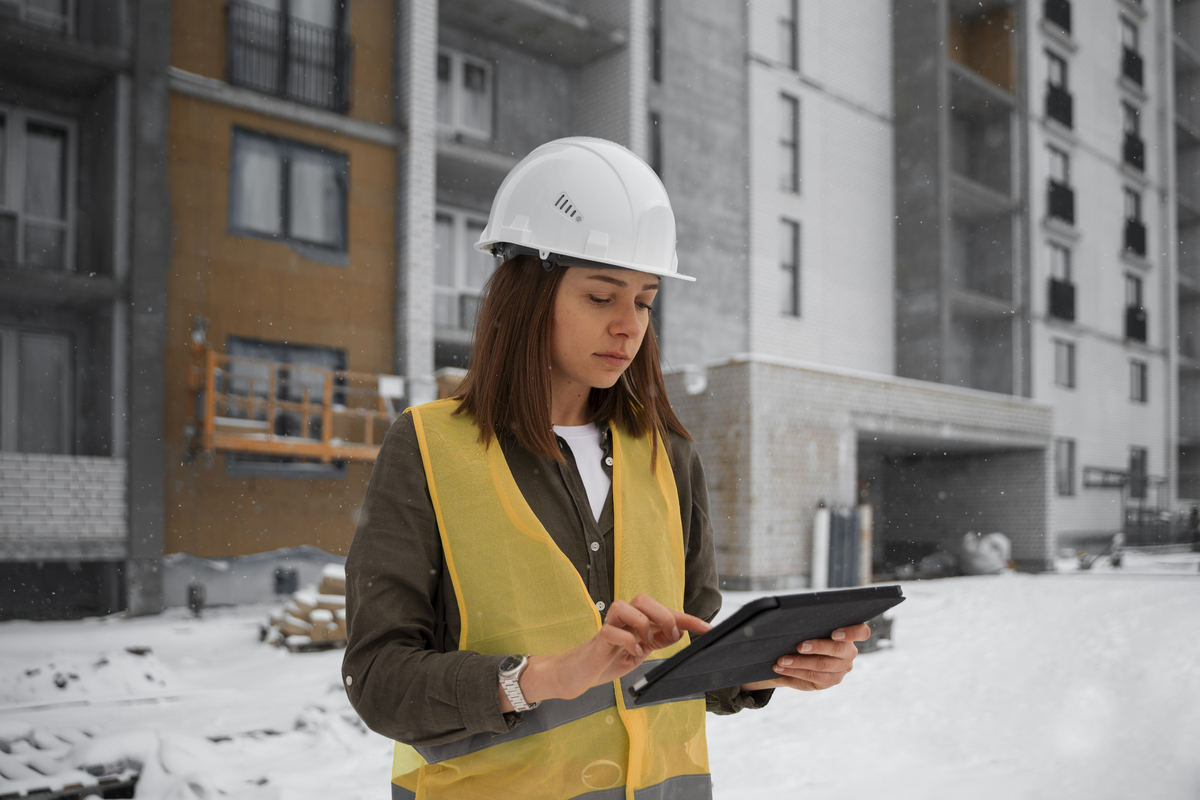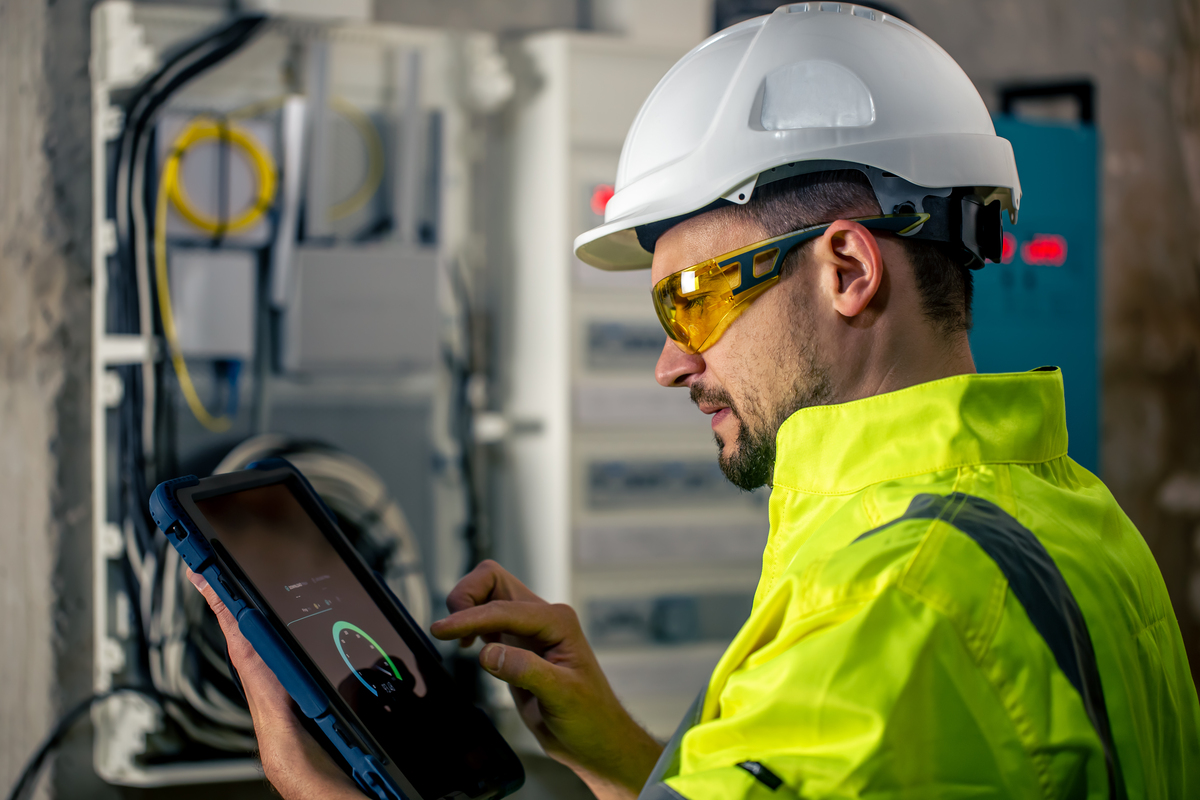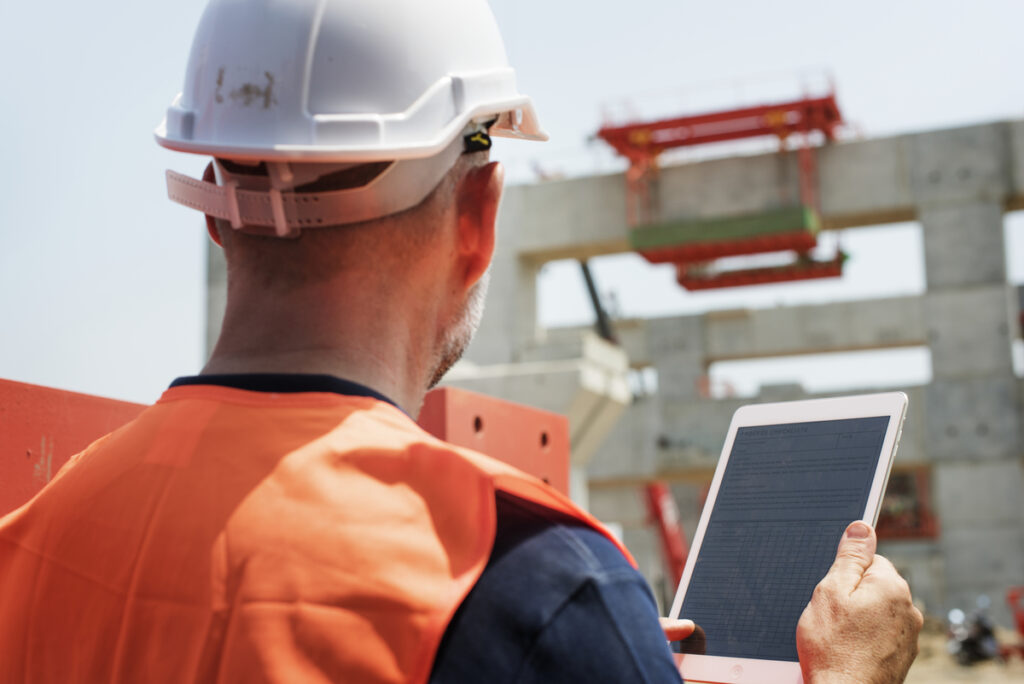Exclusive Neuroject Article: One of the biggest and most significant industries in the world is the building sector. Despite its importance, the industry has a reputation for adopting new technology slowly, which has resulted in numerous inefficiencies and difficulties. But that is changing as the Internet of Things (IoT) takes off.
IoT is revolutionizing the construction sector by bringing new methods of job site management, enhancing safety, and boosting productivity. We shall examine the foundations of the Internet in Construction, its applications in the building industry, and its advantages in this context.
In 2021, the market for internet in construction was estimated to be worth USD 8.99 billion. By 2030, it is anticipated to reach USD 29.72 billion, expanding at a CAGR of 14.2% from 2022 to 2030. While growing at a CAGR of 13.71 percent, the Asia Pacific region will dominate the market.
For instance, the usage of wearable technology has enhanced productivity on construction sites by 8.5% and worker happiness by 3.5%. Smart glasses, helmets, and other intelligent wearables are a few examples. The application of the Internet in construction industry is heavily influenced by effective safety management on construction sites.
Exoskeletons, sensors, and smartwatches are examples of IoT devices that increase worker resilience and monitor environmental, biological, and physical factors including temperature, blood pressure, heart rate, and location. As a result, the usage of connected devices to enhance safety management on building sites is what is driving the growth of IoT
Table of Contents
An Overview to Internet in Construction
The Internet of Things is referred to by the acronym IoT. As long as software, sensors, devices, and storage are connected, it integrates the potential of both software and hardware in a single unit that can carry out any given task. The exchange, generation, and operation of data serve as the foundation for the operation. IoT is applicable to all sectors of the economy, including manufacturing, healthcare, and education. Construction is one of the sectors, along with others, that uses IoT in real-time for expansion.
The usage of sensors is one of the most significant ways that the internet in construction is being used in the construction sector. Sensors are used to keep track of a number of variables, including pressure, humidity, and temperature. Construction managers can spot possible concerns before they turn into bigger issues by keeping an eye on these parameters. In order to ensure that concrete cures properly and does not fail or fracture, sensors can be employed to track its temperature and humidity as it hardens. The structural integrity of buildings can also be monitored by sensors to make sure they are secure and safe.
Drone use is another instance of the internet in construction. Drones can be used to survey construction sites, check on the status of the work, and spot any dangers. In order to inspect difficult-to-reach regions like roofs or tall structures without endangering personnel, drones can also be employed. Additionally, tools and materials can be transported by drones, lowering the need for manual work and increasing efficiency.
Suggested articles to read: IoT in Construction?

Advantages of Internet in Construction
The benefits of the internet in construction deployment in building are numerous. IoT, for instance, can increase safety by spotting possible risks before they cause incidents. By lowering the need for human labor and enhancing project management, the IoT can also increase efficiency. By giving real-time data on development and spotting possible delays, internet in construction can also shorten project timelines.
Internet in construction is revolutionizing the construction sector by bringing new methods of job site management, enhancing safety, and boosting productivity. The possibilities for IoT go far beyond the use of drones and sensors. The advantages of IoT will increase as more devices are interconnected and as technology improves. Although the construction sector may have historically been sluggish to accept new technologies, the internet is changing that, and the advantages are obvious.
- Improved Safety: The application of the internet enables the early detection of potential risks. Changes in temperature, humidity, air quality, and other characteristics that might result in hazardous conditions can be detected by sensors and other linked devices. Construction managers can take corrective action before any damage is done because of this real-time data.
- Increased Efficiency: Internet in construction can enhance project management and lessen the demand for physical labor. The monitoring and adjustment of environmental conditions, the tracking of equipment locations, and inventory management are just a few of the duties that connected devices may automate. This lessens the workload for employees, lowers the chance of mistakes, and enables more effective use of resources.
- Real-time Data and Progress Monitoring: Real-time data on the status of construction projects is provided by IoT devices, which facilitates improved resource allocation, scheduling, and decision-making. The movement of goods and equipment, project budgets, and schedules can all be tracked by connected devices. This assists in finding potential delays, streamlining timetables, and cutting down on overall project durations.
- Lower Costs: Internet in construction can aid in waste reduction and better resource management. The utilization of supplies and equipment can be tracked by connected devices, which can notify management of any inefficiencies or overuse. Managers can then take corrective action to lower costs related to wasteful spending and excessive consumption.
- Better Quality Control: Internet devices are capable of real-time material and process monitoring, guaranteeing that the finished product satisfies the required quality requirements. In order to take corrective action before the issue worsens, sensors can identify flaws, errors, or variations from the desired result.
- Concrete Curing: Any building site just contains cement and concrete. Construction can move more quickly with the aid of concrete curing sensors. Does it retrieve the concrete’s temperature? The temperature probing is aided, yes. The casting process is monitored via embedded sensors for curing. You can make plans for the following stage based on the received cloud data.

Disadvantages of Internet in Construction
- High Implementation Costs: It can be expensive to implement internet in construction infrastructure and devices, especially for significant construction projects. This comprises the price of software development, sensors, communication networks, data storage, and analysis. Budget considerations are crucial when deciding who will oversee the setup and configuration of Wi-Fi networks on the job site.
- Dependency on Reliable Internet Connectivity: Reliable Internet access is essential for the use of internet in construction devices in the construction industry. Data transport may be interrupted if connectivity is lost, which could cause delays or other problems. Construction sites in remote or rural areas with poor internet connectivity may find this to be a significant concern.
- Security Concerns: Internet in construction devices are susceptible to hacking, data breaches, and cyberattacks. Sensitive information, such as financial data, personal information, and construction plans, maybe in danger as a result. IoT networks and devices must be secure if they are to be successfully implemented in the building industry. You must build robust encryption, authentication, and access control measures, as well as adhere to pertinent laws and ethical standards, in order to ensure data security and privacy.
- Limited Compatibility: Interoperability problems may arise as a result of incompatibility between various internet in construction devices and platforms. This can be particularly troublesome if various stakeholders or construction companies use various IoT solutions, making it challenging to effectively communicate data.
- Limited Technical Expertise: It’s possible that many managers and construction workers lack the technical skills or understanding required to integrate and operate internet devices. This may result in resistance to change and unwillingness to adopt new technologies, especially if those technologies are perceived as being challenging to use or comprehend.
Limitations of Internet in Construction
- Limited Battery Life: Internet in construction devices frequently rely on batteries for electricity, but batteries may only last so long. This necessitates regular replacement or recharge, which can be difficult and time-consuming.
- Limited Range of Communication: Particularly on large or complicated building sites, internet in construction devices may only have a short communication range. To ensure dependable and continuous data delivery, this can necessitate a network of connected devices.
- Environmental Factors: The functionality of the internet devices may be impacted by extreme temperatures, weather patterns, and other environmental factors, resulting in erroneous or missing data.
- Limited Accuracy and Precision: Data gathering and processing could be compromised by the limited accuracy and precision of sensors and other linked devices. For instance, the placement of the sensor or the presence of other equipment in the region may have an impact on sensors that monitor the temperature or humidity level. Data that is wrong as a result may influence poor judgment and behavior.
- Data Overload: The Internet in construction devices can produce a lot of data, which can be challenging to interpret and analyze. In order to derive practical insights from the data, complex software and analysis techniques are required. Furthermore, decision-making delays and project progress might be brought on by data overload. Data needs to be stored securely and effectively for usage in the future, which might result in significant storage expenses.

Challenges Facing the Adoption of the Internet in Construction
- Resistance to Change: In a traditional sector, construction has been slow to incorporate new technologies. Due to a lack of knowledge of the technology or a belief that there are not enough advantages, many construction companies and employees could be reluctant to deploy the internet in construction devices. Consequently, despite the difficulties, the Internet of Things will greatly assist us in the building industry.
- Lack of Standards: Internet hardware and developing networks do not now have any set standards. This makes it challenging to guarantee interoperability between various systems and devices, which could lead to inefficiencies and higher costs. Therefore, there is a need for standardized communication protocols, data formats, and security measures to ensure that the IoT can reach its full potential.
- Data Privacy and Security Concerns: The internet in construction devices is susceptible to cyberattacks and data breaches, as was previously established. Sensitive information, such as financial data, personal information, and construction plans, maybe in danger as a result. Internet data privacy and security must be guaranteed if they are to be successfully adopted in the construction industry. You must build robust encryption, authentication, and access control measures, as well as adhere to pertinent laws and ethical standards, in order to ensure data security and privacy.
- Lack of Technical Expertise: Similar to the internet in construction’s limitations, many construction managers and employees lack the technical know-how required to integrate and operate the Internet. This may result in resistance to change and unwillingness to adopt new technologies, especially if those technologies are perceived as being challenging to use or comprehend. IoT security professionals must have a very technical skill set to counter these risks since IoT devices are susceptible to identity theft, device manipulation, and data fabrication.
- Infrastructure Limitations: Internet devices depend on dependable internet access, which might not always be available on building sites. The usage of internet devices may be constrained by a lack of infrastructure, especially in isolated or rural regions. Over time, this issue will get better and infrastructure will be put in place to address it.

Internet Can Be Applied to Civil Engineering
- Structural Health Monitoring: Monitoring the performance and condition of structures including buildings, bridges, and dams is a part of structural health monitoring. IoT sensors can track variables like vibration, strain, temperature, and humidity to provide real-time information about the state of the structure. This information can be utilized to identify and classify structural issues, allowing for quick fixes and upkeep. Additionally, the internet in construction can offer predictive maintenance, enabling engineers to find possible issues before they arise.
- Construction Site Monitoring: By delivering real-time data on productivity, safety, and efficiency, the internet in construction can be utilized to monitor construction sites and equipment. Construction equipment can have sensors attached to track usage and performance, enabling predictive maintenance and minimizing downtime. IoT may be used to monitor worker safety by spotting possible risks and instantly informing both employees and supervisors.
- Traffic Management: The Internet can be used to monitor and control traffic in urban areas. To track traffic flow and offer real-time information on traffic conditions, sensors can be deployed on roadways and intersections. Utilizing this information will improve safety, manage traffic signals, and lessen congestion. Real-time updates to navigation systems can also be made possible by internet in construction, giving drivers information on the quickest routes and any potential delays.
- Water Management: IoT may be used to manage water usage, find leaks, and monitor water quality. Water treatment facilities and distribution networks can be equipped with sensors to monitor water quality and identify potential issues like leaks or contamination. Utilizing this information helps improve water efficiency and cut down on waste.
- Environmental Monitoring: The internet may be used to track environmental factors including weather, noise levels, and air quality. To track pollution levels and offer real-time information on air quality, sensors can be put in urban areas. This information can be utilized to promote public health and guide policy decisions. IoT can also be used to track weather patterns and anticipate natural disasters, allowing for quick response and evacuation.
By enabling real-time monitoring and data analysis, predictive maintenance, and better decision-making, the internet in construction has the potential to revolutionize the civil engineering field. Civil engineering may become more effective, secure, and sustainable by integrating IoT devices into current infrastructure and procedures.

Future Aspects of Internet in Construction
Although IoT adoption in the construction sector is still in its infancy, the future is promising and offers a wide range of opportunities thanks to the rapid advancement of IoT sensor research. IoT, AI, and ML will be present in the years 2022–2030. In the real estate industry, there is intense competition, and new technologies appear rapidly. Therefore, as a business owner, it is your duty to provide your staff with cutting-edge equipment and cutting-edge technology like IoT.
Leveraging digital techniques will be beneficial for growing your organization. To provide the workforce with a novel experience, you can employ a mobile app developer and create an IoT app. Better resource utilization is crucial to the success of any corporate expansion strategy.
Suggested articles to read: Guide to IoT Sensor | AI in Construction
Conclusion:
One of the most fascinating recent advancements in construction technology is the Internet of Things. According to McKinsey consultants, it could have a nearly $1 trillion global economic impact on worksites by 2025, indicating that it is expected to become a more typical occurrence in the sector. Internet in construction is undoubtedly one to monitor given the sheer number of applications and some significant advantages.
It’s not exaggerating to argue that the internet has the potential to revolutionize the building sector. Construction firms may streamline their operations, increase efficiency, and guarantee compliance with safety requirements by utilizing smart equipment, internet connectivity, and intuitive user interfaces. To learn how internet in construction technologies can make your construction company safer, more effective, and more profitable, get in touch with Nabto right away.
Although the construction industry is implementing new technology and communication techniques, it should be noted that this process is still a little slow. Many builders and contractors are unwilling to spend money on such gadgets because they are unaware of their importance. However, if used appropriately and carefully, these technologies can be crucial in helping to establish a location where everything is organized into a single space and is recorded.
Applications for the internet in construction might help you keep track of upcoming and new construction-related costs both on and off the job site. They offer detailed information that can be tracked and documented. The best way for construction companies to adopt technology is to focus their efforts on areas where internet may have the greatest immediate impact depending on their unique needs.
Resources:
Rogers | MHO | PlanRadar | Uptown Communications | ArchDesk | Telus | Indovance
For all the pictures: Freepik




